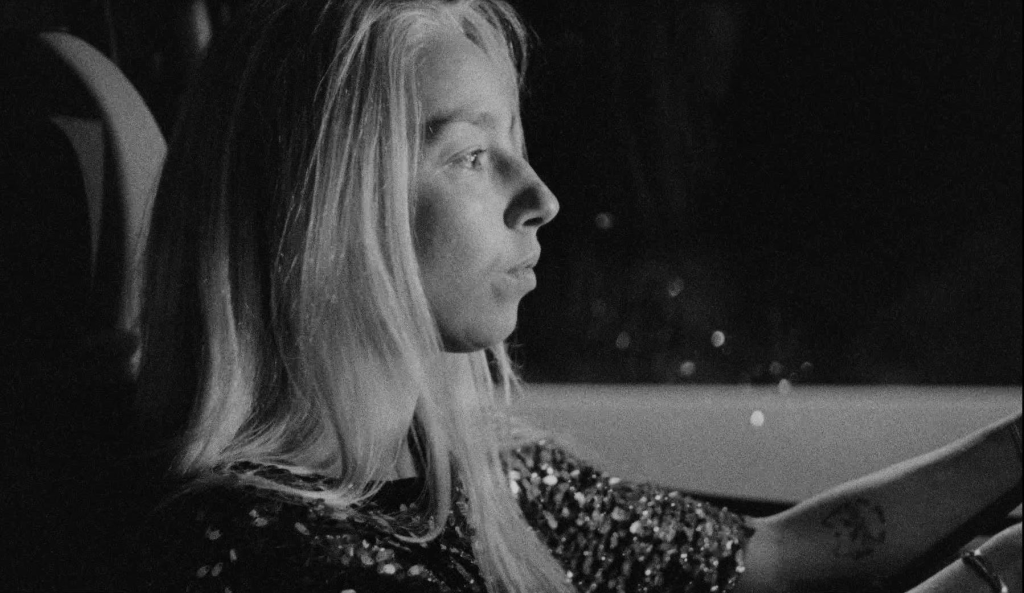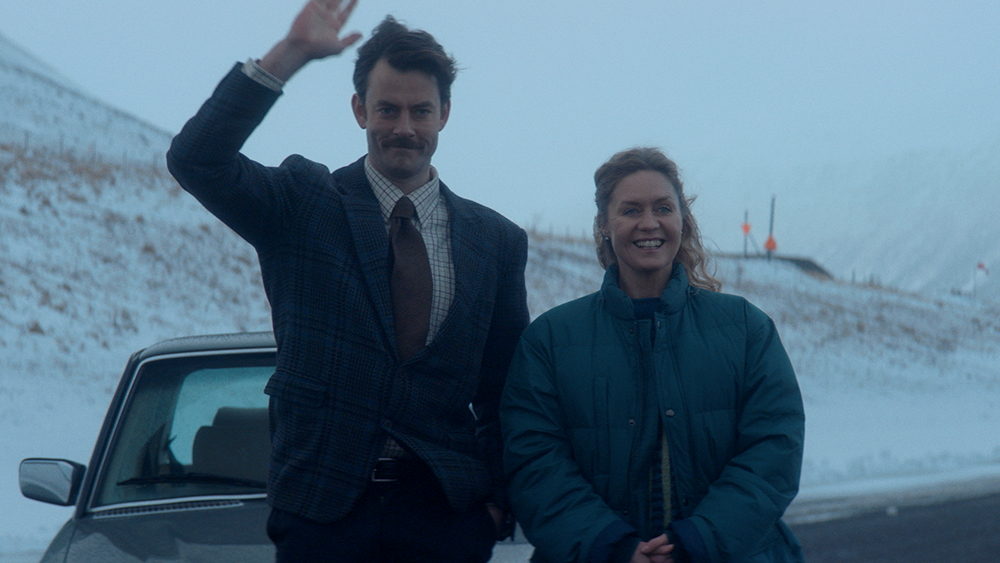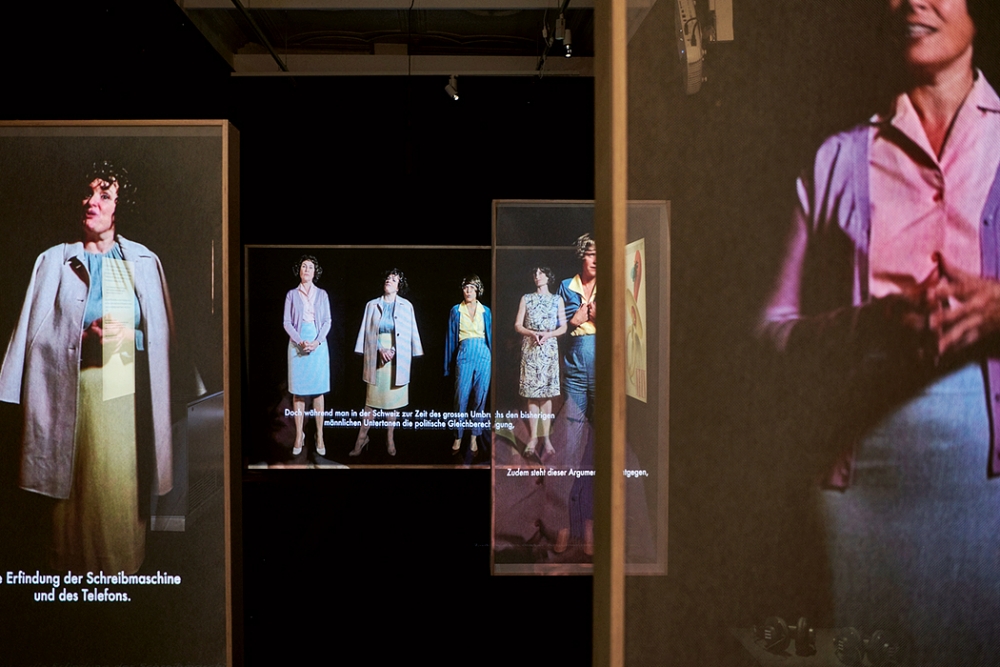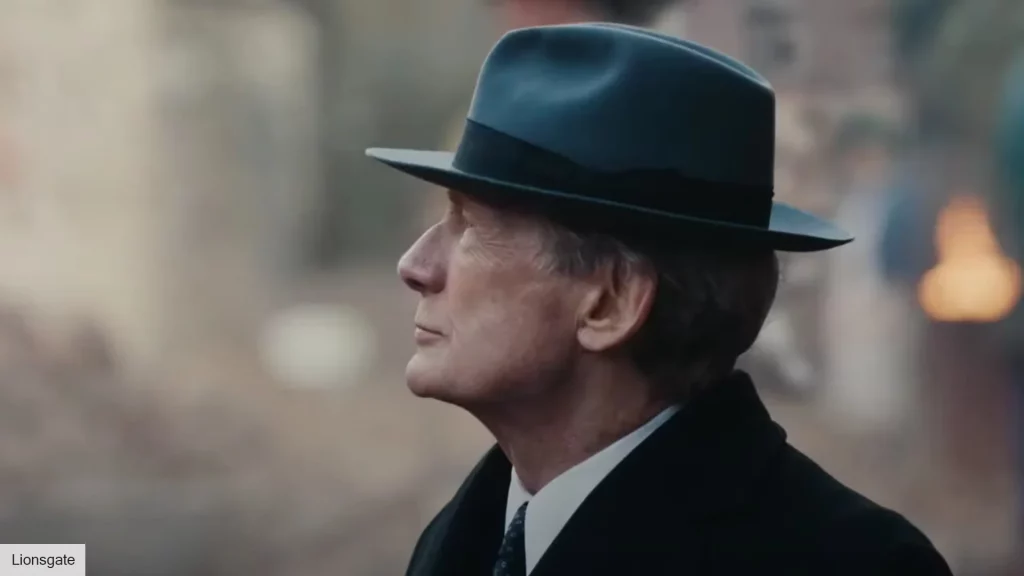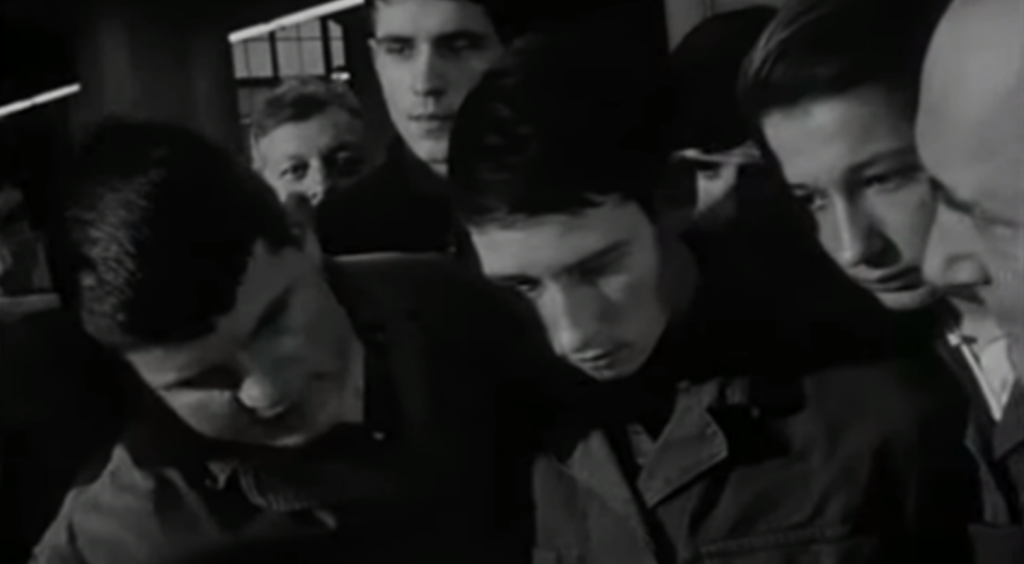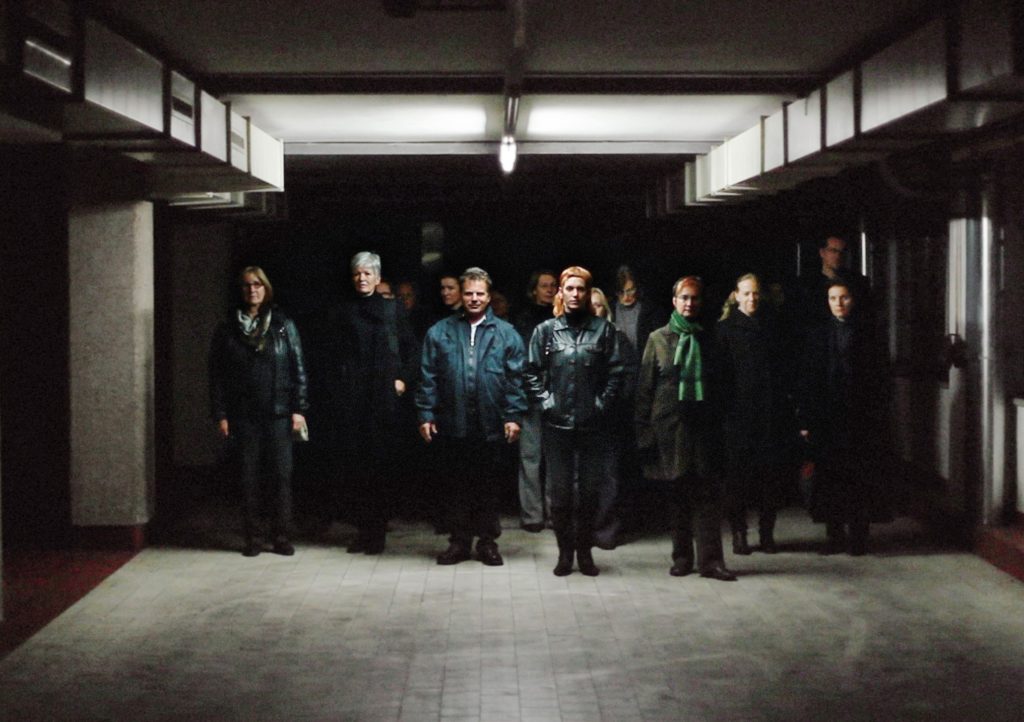The De-Subjectivating Power of Cinematic Images, or Becoming-Class at the Movies
Attempting to evaluate the political potential of moving images is not a new and groundbreaking effort. Since the early days of the medium, critics and scholars have debated and analysed the imaginative and creative possibilities for audiences interacting with specific audiovisual “texts”, to be understood in their essential characteristics and formal qualities. Soviet filmmakers discussed and practiced a cinema for the revolution with the direct aim to mobilise in viewers the facets of a renewed humanity. Walter Benjamin and Siegfried Kracauer connected the analysis of mechanised art forms with the examination of the emergence of collective, urbanised, and industrial social formations. Similarly, from Adorno to the critics at the Cahiers up to our days after the emergence of British Cultural Studies, many strategies to investigate the subversive, ideological, counter-cultural, or repressive role of cinema and television have been devised and applied (and still are, of course). The latter field, in particular, has allowed critics to move their attention away from the exclusivity of the “text” in order to better understand the role of viewers in their power of reading against the grain. Therefore, to state that there is still a need to go back to the initial question, to try to understand the political power of moving images in their audiovisual specificity may definitely raise some eyebrows. Indeed, this preoccupation may feel a bit old-fashioned and associated with the desire to go back to “outdated” methods of film criticism.
This approach appears even more outdated when we acknowledge the effects of the postmodern condition (to use a catchy expression), in which, to put a long story short, the academic and critical examination has radically shifted, trying to understand more closely the ways in which audiences and social group interact with media. However, the optimism and enthusiasm that comes with the undisclosed potential of audiences should never shy away from taking into account two key issues of our neoliberal age, and their impact on our fruition of audiovisual languages. First of all, we see more and more how media industries exist as violent monopolies, absorbing different entertainment sectors while controlling them through a strict chain of command. The current SAG-AFTRA/WGA strikes are but an evidence testimony of the status of an industry that operates in a predatory way, with rentier capitalist on top, investing their money exclusively on the “content” that can be more easily repackaged in all possible entertainment format.
At the same time, exactly because of the economic shifts that have taken place in the last five decades, our economy is one in which the main concern is to generate marketing targets, to produce dataisable subjects who exist as fixed consumers’ categories. Style, themes, and formal patterns do not matter since what is essential, in this context, is to receive and find ourselves recognised in the audiovisual material we interact with. Arts are not there to open up an undisclosed space, but to be relatable and adequate in responding to alleged needs of audience members. The illusion of freedom of choice that is often associated with prosumers’ ability to navigate the film and telvision ecology collapses when facing all the obvious role played by these power structures in mediating viewers’ access and agency. It is on this note that it becomes necessary to reinstate a conversation about the possibility for moving image to create ruptures and critical openings within a certain social and ideological field.
I would imagine as starting point of this meditation exactly the assumption that the main quality of the cinematic experience is to break and create disalignment in the construction of subjectivity. One of the main tenets of neoliberal ideology and hegemony is the assumption that we exist as atomised individuals carrying a baggage of experiences, competences, and skills that would constitute our human capital to be used as assets in everyday activities and in all sorts of contexts. To frame the encounter with a work of art as nothing but a reinforcement of this image removes from the table the possibility to generate new ideas and explores different sides of reality through fictional (or not) storyworlds. However, the openness of the artistic experience is not to be reduced to the simple acquisition of the new, thus, remaining fundamentally external to world we live in (Foucault would have called these heterotopias). To interact with a film means, in a way, being placed in a condition of unsettling relationality, having to come to terms with the rules of a particular world and with the behaviour of the characters inhabiting them.
In line with Sabina Spierlein’s idea of eroticism as intrinsically connected with the need to destroy egocentric models for the purpose of forming new relational subjectivities, the cinematic experience is much more transformative because it requires viewers to engage this process of self-annihilation. Rather than externally observing while watching a film, we become within this process (in accordance with a set of aesthetic patterns provided) in a way that is far from resolved or harmonic. The discovery of particular stories and ways of behaving, indeed, may encounter resistances on the side of the viewers, which, of course, have their validity and legitimacy.
Without suggesting a model for appropriate “cinematic participation, another important element to consider, when evaluating the openness of audiovisual languages, is the acknowledgement of their inherent multiplicity. Instead of thinking about artistic objects as characterised by a fixed formal consistency, we should always appreciate the ways in which films, for instance, are pervaded by heterogeneous and, many times, conflicting tensions. It is exactly this polyphony what allows us viewers to experiment and explore our subjectivity as susceptible to radical modifications and remodulations. We may empathise with characters whose decisions (and background) differs from ours even in expressing ideas and values that we may find repulsive and, still, engage with this alterity, understand that as a legitimate facet of the reality we are immersed in. The dialogical power of movies, of course, is not limited to those case studies to which we could allegedly easily associate a critical political concern, or whose explicit (or less enunciated) themes would captures the anxieties of a particular historical context. The possibility to create out of the encounter with an artistic object is not the prerogative of a specific stylistic form but it can be reconducted to the “power” or intense affective and conceptual maps that it provides.
Indeed, if a very conventional example of art-house cinema like Tár (Field, 2022) has caused harsh debates, it is not merely out of its alleged criticism of cancel culture. As a matter of fact, this aspect of the film is probably the least interesting and causing facile divisions. Instead, I would argue that the most fascinating aspect of the film is that it forces a conversation about the nature of artistic experience, about the need to embrace it as something that allows us to materially overcome ideas of ourselves, beyond any supposed elitism and aesthetic hierarchy. Far away from any desire to reinstate unhelpful separations between low and high art forms, we could, going back to the previous point, take into account what a film or a TV series asks us to do and what we can do with it. Here, in this space of undisclosed multiplicity a new consciousness may raise, and find its way into the world. Recognising subjects and their struggles, identifying other spaces in the audiovisual psychogeography of our reality are all ways in which our subjectivity opens up and faces challenges to its unity.
The material power of images can be that of unleashing a new consciousness. As for Karl Marx becoming-class is a non-unitary continuous process of discovery of material conditions and related political agency, forming new subjectivities at the movies is possible exactly because, as viewers, we exist in a status of aleatory opening. Becoming-class, resisting against the tides of neoliberal dominion, concurrently, does not equate to reaching a pure revolutionary palingenesis. At the movies, inasmuch as in any other aspect of our everyday existence, the unearthing of our relational strength has rather to do with the effort to stay with the world (to believe in it, Gilles Deleuze would have argued) to re-imagine it, to embrace its complexity while finding new weapons, tools, and ways of organising at every turn. To viewers the exciting challenge to explore the modes and opportunities of this collective becoming hidden in every shade and pixel of a screens-surrounded world.
Recommended reading:
Sticchi, Francesco (2021): Mapping Precarity in Contemporary Cinema and Television: Chronotopes of Anxiety, Depression, Expulsion/Extinction, Palgrave Macmillan.
The De-Subjectivating Power of Cinematic Images, or Becoming-Class at the Movies
Attempting to evaluate the political potential of moving images is not a new and groundbreaking effort. Since the early days of the medium, critics and scholars have debated and analysed the imaginative and creative possibilities for audiences interacting with specific audiovisual “texts”, to be understood in their essential characteristics and formal qualities. Soviet filmmakers discussed and practiced a cinema for the revolution with the direct aim to mobilise in viewers the facets of a renewed humanity. Walter Benjamin and Siegfried Kracauer connected the analysis of mechanised art forms with the examination of the emergence of collective, urbanised, and industrial social formations. Similarly, from Adorno to the critics at the Cahiers up to our days after the emergence of British Cultural Studies, many strategies to investigate the subversive, ideological, counter-cultural, or repressive role of cinema and television have been devised and applied (and still are, of course). The latter field, in particular, has allowed critics to move their attention away from the exclusivity of the “text” in order to better understand the role of viewers in their power of reading against the grain. Therefore, to state that there is still a need to go back to the initial question, to try to understand the political power of moving images in their audiovisual specificity may definitely raise some eyebrows. Indeed, this preoccupation may feel a bit old-fashioned and associated with the desire to go back to “outdated” methods of film criticism.
This approach appears even more outdated when we acknowledge the effects of the postmodern condition (to use a catchy expression), in which, to put a long story short, the academic and critical examination has radically shifted, trying to understand more closely the ways in which audiences and social group interact with media. However, the optimism and enthusiasm that comes with the undisclosed potential of audiences should never shy away from taking into account two key issues of our neoliberal age, and their impact on our fruition of audiovisual languages. First of all, we see more and more how media industries exist as violent monopolies, absorbing different entertainment sectors while controlling them through a strict chain of command. The current SAG-AFTRA/WGA strikes are but an evidence testimony of the status of an industry that operates in a predatory way, with rentier capitalist on top, investing their money exclusively on the “content” that can be more easily repackaged in all possible entertainment format.
At the same time, exactly because of the economic shifts that have taken place in the last five decades, our economy is one in which the main concern is to generate marketing targets, to produce dataisable subjects who exist as fixed consumers’ categories. Style, themes, and formal patterns do not matter since what is essential, in this context, is to receive and find ourselves recognised in the audiovisual material we interact with. Arts are not there to open up an undisclosed space, but to be relatable and adequate in responding to alleged needs of audience members. The illusion of freedom of choice that is often associated with prosumers’ ability to navigate the film and telvision ecology collapses when facing all the obvious role played by these power structures in mediating viewers’ access and agency. It is on this note that it becomes necessary to reinstate a conversation about the possibility for moving image to create ruptures and critical openings within a certain social and ideological field.
I would imagine as starting point of this meditation exactly the assumption that the main quality of the cinematic experience is to break and create disalignment in the construction of subjectivity. One of the main tenets of neoliberal ideology and hegemony is the assumption that we exist as atomised individuals carrying a baggage of experiences, competences, and skills that would constitute our human capital to be used as assets in everyday activities and in all sorts of contexts. To frame the encounter with a work of art as nothing but a reinforcement of this image removes from the table the possibility to generate new ideas and explores different sides of reality through fictional (or not) storyworlds. However, the openness of the artistic experience is not to be reduced to the simple acquisition of the new, thus, remaining fundamentally external to world we live in (Foucault would have called these heterotopias). To interact with a film means, in a way, being placed in a condition of unsettling relationality, having to come to terms with the rules of a particular world and with the behaviour of the characters inhabiting them.
In line with Sabina Spierlein’s idea of eroticism as intrinsically connected with the need to destroy egocentric models for the purpose of forming new relational subjectivities, the cinematic experience is much more transformative because it requires viewers to engage this process of self-annihilation. Rather than externally observing while watching a film, we become within this process (in accordance with a set of aesthetic patterns provided) in a way that is far from resolved or harmonic. The discovery of particular stories and ways of behaving, indeed, may encounter resistances on the side of the viewers, which, of course, have their validity and legitimacy.
Without suggesting a model for appropriate “cinematic participation, another important element to consider, when evaluating the openness of audiovisual languages, is the acknowledgement of their inherent multiplicity. Instead of thinking about artistic objects as characterised by a fixed formal consistency, we should always appreciate the ways in which films, for instance, are pervaded by heterogeneous and, many times, conflicting tensions. It is exactly this polyphony what allows us viewers to experiment and explore our subjectivity as susceptible to radical modifications and remodulations. We may empathise with characters whose decisions (and background) differs from ours even in expressing ideas and values that we may find repulsive and, still, engage with this alterity, understand that as a legitimate facet of the reality we are immersed in. The dialogical power of movies, of course, is not limited to those case studies to which we could allegedly easily associate a critical political concern, or whose explicit (or less enunciated) themes would captures the anxieties of a particular historical context. The possibility to create out of the encounter with an artistic object is not the prerogative of a specific stylistic form but it can be reconducted to the “power” or intense affective and conceptual maps that it provides.
Indeed, if a very conventional example of art-house cinema like Tár (Field, 2022) has caused harsh debates, it is not merely out of its alleged criticism of cancel culture. As a matter of fact, this aspect of the film is probably the least interesting and causing facile divisions. Instead, I would argue that the most fascinating aspect of the film is that it forces a conversation about the nature of artistic experience, about the need to embrace it as something that allows us to materially overcome ideas of ourselves, beyond any supposed elitism and aesthetic hierarchy. Far away from any desire to reinstate unhelpful separations between low and high art forms, we could, going back to the previous point, take into account what a film or a TV series asks us to do and what we can do with it. Here, in this space of undisclosed multiplicity a new consciousness may raise, and find its way into the world. Recognising subjects and their struggles, identifying other spaces in the audiovisual psychogeography of our reality are all ways in which our subjectivity opens up and faces challenges to its unity.
The material power of images can be that of unleashing a new consciousness. As for Karl Marx becoming-class is a non-unitary continuous process of discovery of material conditions and related political agency, forming new subjectivities at the movies is possible exactly because, as viewers, we exist in a status of aleatory opening. Becoming-class, resisting against the tides of neoliberal dominion, concurrently, does not equate to reaching a pure revolutionary palingenesis. At the movies, inasmuch as in any other aspect of our everyday existence, the unearthing of our relational strength has rather to do with the effort to stay with the world (to believe in it, Gilles Deleuze would have argued) to re-imagine it, to embrace its complexity while finding new weapons, tools, and ways of organising at every turn. To viewers the exciting challenge to explore the modes and opportunities of this collective becoming hidden in every shade and pixel of a screens-surrounded world.
Recommended reading:
Sticchi, Francesco (2021): Mapping Precarity in Contemporary Cinema and Television: Chronotopes of Anxiety, Depression, Expulsion/Extinction, Palgrave Macmillan.
TÁR (2022) - Official Trailer
A Dangerous Method [2011] Official Trailer
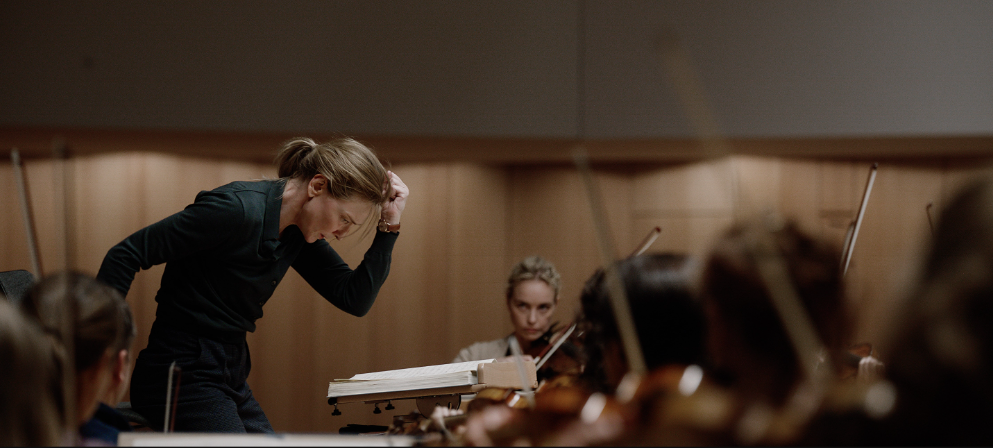
Focus Features

The „Individual Responsibility“ Con
The beautiful, angry gig-economy comedy "Do not Expect Too Much from the End of the World" (2023, Radu Jude) doesn't have to look far for exploitative conditions in Bucharest, but finds them en-route in a production assistant's car.
Fisheries policy and the law of accidents at work
The series 'Blackport' (2021) virtuously works through a piece of Icelandic economic history surrounding the introduction of fishing quotas. Dramatic, amusing and at the same time educational, this microcosm reflects the ills of the wider world.
“Women in the Playpen”. Female Role Models and Swiss Vocational Education
A small but fine exhibition on Swiss author Iris von Roten at the Strauhof Literature Museum in Zurich, raises questions about inclusion and gender in Swiss vocational education - then and now.
(Un)responsible work — for us
"Living - once really living" (2022) is the British remake of Akira Kurosawa's 1952 classic "Ikiru". The film addresses a central theme of the working world: taking responsibility. Bill Nighy, perhaps in the role of his life, screenwriter Ishiguro and the film itself have been nominated for several British film awards.
Unfiltered working realities. The apprenticeship of a skilled canner
A critical look at archival vocational guidance films can sharpen one's view of major changes in the world of work and occupations. Making, taking a closer look at a Swiss television report on the apprenticeship of canners from the 1960s, worth it.
Dystopias of the working world
After more than a century, Katharina Gruzei's reinterpretation of the very first film in film history, ‘Workers Leaving the Factory’, shows a grim picture of the world of work and gives food for thought: Has the situation of workers deteriorated so much and what kind of worklife are we even heading towards?

About this blog
By selecting a film or an image, this blog literally illustrates the vast sphere of work, employment & education in an open collection of academic, artistic and also anecdotal findings.
About us
Konrad Wakolbinger makes documentary films about work and life. Jörg Markowitsch does research on education and work. They are both based in Vienna. Information on guest authors can be found in their corresponding articles.
More about
Interested in more? Find recommendations on relevant festivals, film collections and literature here.
About this blog
With picking a film or an image, this blog literally illustrates the vast sphere of work, employment & education in an open collection of academic, artistic and also anecdotal findings.
About us
Konrad Wakolbinger makes documentary films about work and life. Jörg Markowitsch does research on education and work. We both work in Vienna. Information on guest authors can be found in their respective articles.
More about
Interested in more? Find recommendations on relevant festivals, film collections and literature here.


